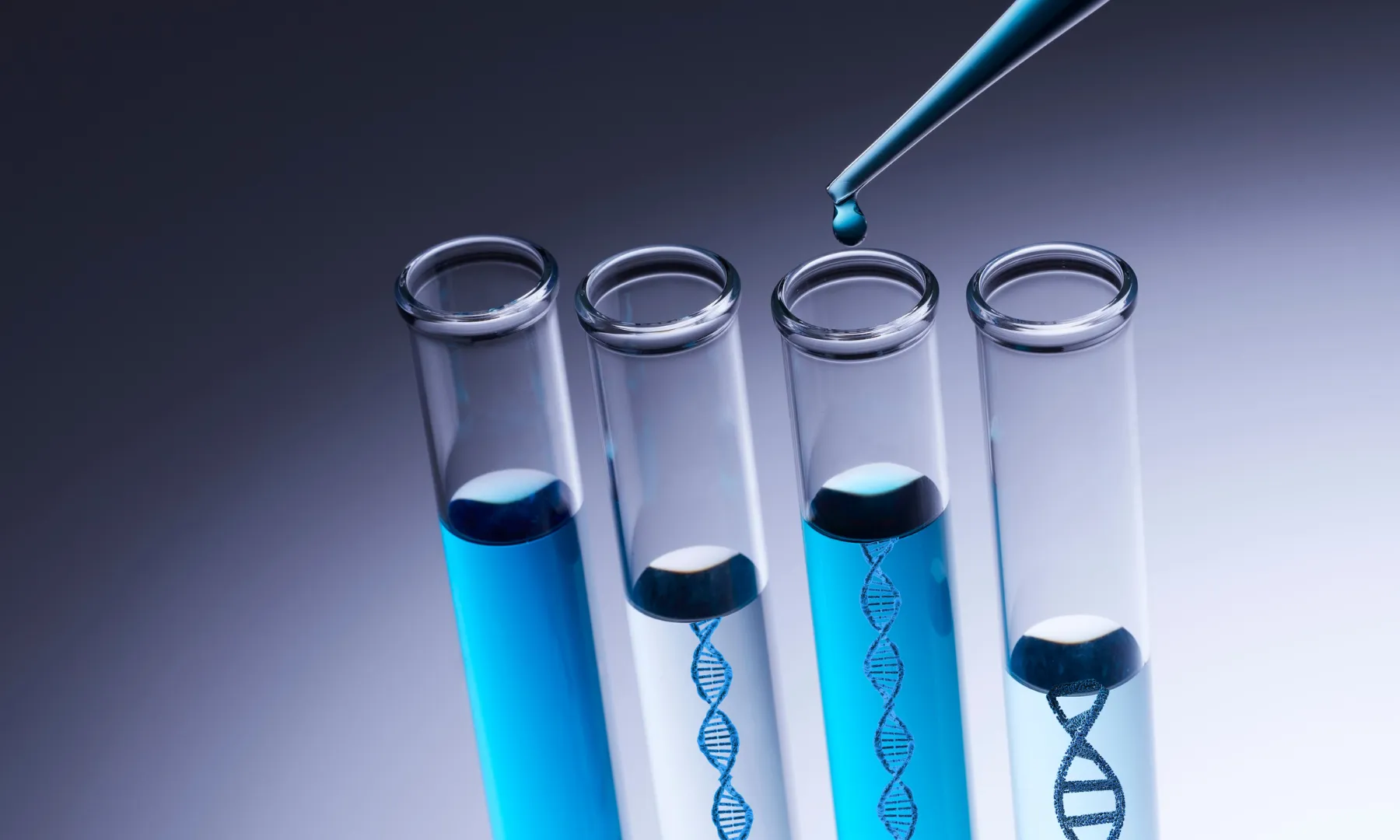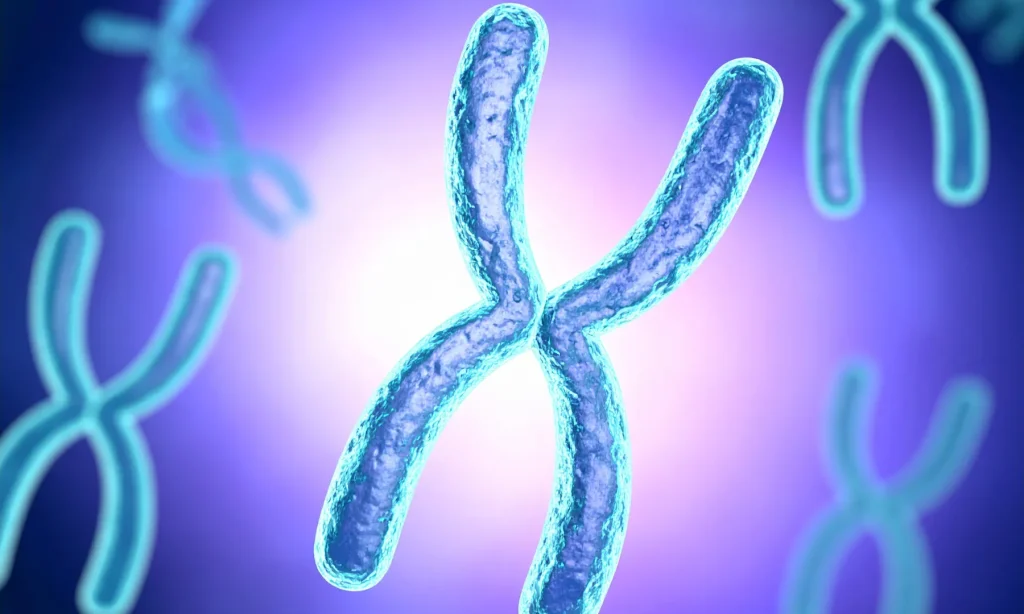
On a Tuesday, a patient walks in clutching a glossy report from their latest DNA nutrition test. Their eyes sparkle with hope, finally, a roadmap for their perfect diet, written straight into their genes… or so they think. We’ve all seen the rising tide; DNA and nutrition have become the toast of personalized wellness, but sometimes, the conversation at the clinic feels like a game of telephone, with science lost in translation by the final ring.
You’re not alone if you’ve felt that heady mix of excitement and skepticism, maybe even a pinch of confusion, about just what these tests deliver, and what they definitely don’t. Misinformation isn’t just common; it practically hitchhikes along with every sleek genetic nutrition testing kit that hits your waiting room. The stakes? Ethical considerations, clinical missteps, and, let’s be honest, a few expensive headaches down the road for both practitioners and patients.
So let’s roll up our sleeves together. From persistent nutrigenomics myths to the nitty-gritty of misinterpreting SNP results, we’ll cut through the marketing fog. Along the way, you’ll pick up tools to sniff out DNA diet false claims and new habits for validating the real science (without needing a crystal ball or a decade in a genetics PhD program). Ready to turn confusion into confident practice? Let’s get started.
Key Takeaways
Genetic nutrition testing misconceptions stem from commercial inconsistencies and slick marketing claims.
Your genes provide valuable information, but DNA nutrition results must be interpreted in the context of environment, lifestyle, and validated clinical data.
Common practitioner errors include overvaluing single-gene variants and assuming that genetic correlations imply causation.
Rely on peer-reviewed research and population-specific allele data when interpreting nutrigenomic testing results.
Effective DNA and nutrition strategies focus on high-impact, nutritionally modifiable gene patterns rather than just minor variants.
Building patient trust in genetic nutrition testing requires transparency about its limitations and dedicated education to dispel prevalent myths.
Table of Contents
Why Misunderstandings Happen in DNA-Based Nutrition
It’s tempting to view genetic nutrition testing as a crystal-clear window into your clients’ dietary destiny. But much of the confusion stems from the wild west of direct-to-consumer tests and a disconnect between DNA and day-to-day life. Let’s break down where those misunderstandings start.
Commercial Testing Limitations
Ever notice how 23andMe or similar kits market their DNA and nutrition panels with glossy labels and neat graphs? Don’t let the slick packaging fool you. Commercial genetic nutrition testing is famously inconsistent. Labs tend to pick different SNPs (single-nucleotide polymorphisms), use separate databases, and skip tedious peer-reviewed validations, sometimes in a dash to launch the next big thing.
For example, I once tried two popular kits just for kicks; my “best diet” recommendations came out opposite: one kit warned me away from carbs, and the other suggested I needed more. Turns out, some panels screen just a handful of variants and lack ClinVar or Clinical Laboratory Improvement Amendments (CLIA) certification. Combine that with the marketing sparkle, and it’s no wonder myths run wild. So, don’t expect a DNA test to hand you a menu tailored by Mother Nature herself.
Lack of Phenotype Context
Here’s something the fine print rarely mentions: your genes are only part of the story. Think of your patient’s DNA as a cookbook, not a finished meal. Plenty of environmental ingredients, diet, stress, lifestyle, and even sleep, are still at play. That’s why MTHFR and its alleged call for instant methyl folate supplements is a classic cautionary tale. I’ve seen folks rush into one-size-fits-all interventions, only to realize their signs needed broader biochemical and clinical markers, not just a glance at genotype. In short: genotype doesn’t always translate cleanly to phenotype, so context is everything.

Top Practitioner Errors in SNP Interpretation
You know that tingling sense of promise you get from a fresh DNA nutrition report? Temper it with a dose of hard-earned wisdom. Genetics is layered, and even for seasoned practitioners, trip-ups are too easy to make.
Over-Valuing Single Gene Variants
The siren song of “gene exceptionalism” is strong. I see it all the time, practitioners zeroing in on one flashy polymorphism (looking at you, COMT and APOE) and treating it like a dietary death sentence. The truth? If you let one SNP dictate the entire nutrition game plan, you’re only seeing a sliver of the picture. Complex conditions like diabetes or cardiovascular conditions? They’re more like sprawling detective novels, not tidy two-page short stories. Practice points: always consider multi-gene patterns instead of falling for the quick-fix lure of single-variant drama.
Ignoring Gene-Gene and Gene-Environment Interactions
Ever seen a patient defy their DNA “destiny” just by tweaking their diet or moving to the coast for a sea-salt reset? That’s the messy magic of gene-gene and gene-environment interactions. Single-gene analysis omits crosstalk, epistasis, and the roles of other metabolic players. I once watched a vegan marathoner test positive for an “unfavorable” FTO variant for obesity risk… yet their health metrics were off-the-charts stellar. The takeaway? Genes set the stage, but environment and nutrition shape the plot twists.
Assuming Causation from Correlation
Oh, the rabbit holes I’ve seen from folks misreading the flashy graphs from genome-wide association studies (GWAS). Just because a particular SNP is associated with a trait in population studies doesn’t mean your patient is fated for that outcome. Correlation does not equal causation. Practitioners, me included, have fallen for those seductive headlines (“SNP X CAUSES Obesity.”), When the evidence is still linking dots rather than concluding. Always chase the paper trail, clinical validation, and biomarkers, not just statistical noise.
How to Validate Nutrigenomic Findings
If you want your recommendations actually to stick and stand up to scrutiny, you need more than a Google search and a nifty infographic from a testing company. Let’s talk about digging deeper for the real story.
Integrating Peer-Reviewed Research
First rule: trust but verify. PubMed, NCBI, and specialized nutrigenomics journals are your new best friends. Don’t just take manufacturer claims at face value; run the referenced studies through your own filter. Here’s a checklist I use:
Was the sample size big enough?
Was the population similar to your client’s ethnicity?
Has the finding been replicated in at least one other cohort?
A tip from experience: Always check for review articles or meta-analyses. It’s easy to get caught up in a headline making a splash from a single poorly replicated study.
Cross-Checking Allele Frequency and Ethnicity
Ever catch yourself lumping all “risk alleles” together because a big database says so? That’s a fast way to mislead. Allele frequencies vary across populations; what’s risky in Europeans might be benign in East Asians, and vice versa. Using tools like ClinVar or dbSNP to look up frequencies makes all the difference. Here’s a quick “a-ha.” from my practice: a client flagged as at-risk for MTHFR C677T until I realized the variant was common in their background… and their homocysteine was perfectly normal. Moral of the story: always view SNPs in the context of ethnicity and check if the variant is even relevant for your patient’s background.

Framework for Evidence-Based Interpretation
Let’s get practical: how do you actually turn a pile of SNP data into an actionable nutrition plan, without falling for DNA diet false claims? Use a stepwise decision process, not your gut.
Decision Trees for Variant Clinical Relevance
I live by checklists; nothing beats structure when chaos reigns. Here’s my go-to flow:
Is the variant reliably replicated (more than two studies, from solid journals)?
Does it affect a rate-limiting enzyme or a critical nutrient pathway?
Is there a phenotype to match, like an abnormal biomarker or clinical indicator?
Is the effect modifiable by diet or lifestyle tweaks?
If your answer chain fizzles at Step 2 or 3, hit pause. No need to jerry-rig interventions for a blip that won’t impact your client.
Prioritizing High-Impact Polymorphisms
Focus energy where it matters most. Not all gene variants deserve your time; skip the noise from low-impact SNPs. Classic heavy-hitters like MTHFR, APOA2, BCMO1, or FTO often affect well-studied biochemical routes and show some response to food or supplements. If you’re juggling a dozen tiny-effect SNPs with little real-world backing, you’re more likely to confuse than help. Stick to clinically meaningful, nutritionally modifiable patterns for DNA and nutrition guidance that actually lands.
Building Trust and Accuracy with Patients
Genetic nutrition testing should inspire confidence, not confusion, or worse, disappointment. But when patients show up with high hopes from DNA diet kits or social media, reality checks are part of your job description.
Here’s what’s worked for me: Be ruthlessly honest about what current tests can and can’t do. Explain how nutrigenomics test accuracy depends on the rigor of both the lab and the underlying science; don’t oversell. If your patient expects a DNA diet to magically solve all their problems, swap in a relatable visual: “Think of your genes as a recipe, there’s room for swapping ingredients and tweaking the cook time.”
And never shy away from the conversation about DNA diet false claims. Hand out myth-busting resources (brochures work wonders in the waiting room) and point patients to reputable databases like ClinVar or the National Library of Medicine’s SNP resources. Education is your ally. I keep a chart handy, like the one below, to address common mix-ups:
Misinterpretation | Why It’s Wrong | What To Do Instead |
|---|---|---|
“MTHFR mutation = methylfolate deficiency” | Over-simplifies: may not affect biochemistry | Check homocysteine and folate levels first |
“APOE4 increases CVD risk” | Ignores diet, exercise, and lipids | Integrate full lifestyle and clinical context |
“One test defines your DNA-based diet” | Can’t capture the whole picture | Layer genetic, clinical, and lifestyle data |
The more you welcome questions and break down jargon, the more trust you’ll build. And when you model nuanced thinking, acknowledging both promise and limits, patients will follow your lead.
Learning to Interpret Genetic Nutrition Testing with Elite Gene Labs’ Integrative Genomics Specialist Program
Mastering DNA nutrition for practice isn’t about memorizing every SNP or chasing every research headline. It’s about cultivating skepticism, honesty, and a toolkit built on science, not hype. You now know how to dodge the biggest nutrigenomics myths, avoid the trap of misinterpreting SNP results, and spot DNA diet false claims from a mile off.
But if the learning curve still feels steep, you’re not alone. That’s why programs like Elite Gene Labs’ Integrative Genomics Specialist Program exist, to give practitioners the hands-on skills, frameworks, and evidence-based habits needed for genetic nutrition testing to become truly actionable, responsible, and patient-centered. Consider it your backstage pass to transforming testing from confusion to clarity, and translating DNA and nutrition insights into tangible results, not just data points.
Frequently Asked Questions
What are the biggest misconceptions about genetic nutrition testing?
Many assume that genetic nutrition testing can create a perfect, personalized diet plan from DNA alone. In truth, genes provide insight into tendencies, not absolutes. Nutritional outcomes depend equally on environment, diet, stress, and lifestyle. At Elite Gene Labs, we emphasize interpreting genetic data within full clinical and lifestyle context.
Can one gene variant determine the best diet for you?
No. Single gene variants like MTHFR or APOE cannot define your nutritional needs. Effective plans consider multiple gene interactions, biochemical pathways, and real-world factors such as diet, exercise, and inflammation markers. Genetic data is a starting point and not a diagnosis.
How accurate are commercial genetic nutrition tests?
Accuracy varies among direct-to-consumer DNA nutrition tests. Many analyze limited SNP panels and may lack peer-reviewed validation. Choosing tests backed by population data, research transparency, and clinical oversight such as those reviewed by Elite Gene Labs, improves reliability and interpretation.
Why is context critical when interpreting SNP results?
SNPs (single nucleotide polymorphisms) reveal potential tendencies, not guaranteed outcomes. Without considering diet, lifestyle, and biochemical markers, these results can be misinterpreted. Contextual interpretation helps prevent overgeneralization and supports personalized, evidence-based nutritional strategies.
Do ethnicity and population background affect DNA nutrition results?
Yes. Genetic variants and allele frequencies differ among populations. A variant linked to nutrient metabolism risk in one group may be neutral in another. Practitioners should always compare results against ethnically relevant databases like ClinVar or dbSNP to ensure accurate conclusions.
Why do different DNA nutrition tests give conflicting recommendations?
Conflicting advice often results from differences in genetic panels, algorithms, and reference databases. The best approach is to have a qualified practitioner review your results holistically, cross-referencing clinical biomarkers, research evidence, and population data for consistency.
Can genetic testing alone replace traditional nutrition assessments?
No. Genetic testing complements, not replaces, conventional nutrition evaluations. Lab results, dietary history, and symptom tracking remain essential. Genetics provides insight into predispositions, while ongoing assessments ensure that interventions align with real-world outcomes.
How can practitioners verify the scientific validity of nutrigenomic findings?
Practitioners should confirm findings using peer-reviewed studies, population frequency data, and evidence from sources like PubMed or the Journal of Nutrigenetics and Nutrigenomics. Validation ensures clinical accuracy and prevents misapplication of unproven gene-diet relationships.
What red flags suggest a nutrigenomic test may be unreliable?
Beware of tests promising instant diet plans, ignoring ethnicity, or lacking cited research. Reliable testing providers disclose methodology, population data, and validation studies. Always verify whether results are clinically reviewed before applying them to patient care.
How does Elite Gene Labs ensure accuracy in genetic nutrition interpretation?
Elite Gene Labs uses evidence-based analysis combining validated SNP data, biochemical testing, and clinical expertise. Our practitioners interpret each result within environmental, dietary, and lifestyle context to deliver reliable, actionable nutritional insights.
References:
Tandy-Connor, S., Coury, S. A., Kopp, J. A., Morrison, M. F., Tellam, R. K., & Vnencak-Jones, C. L. (2018). False-positive results released by direct-to-consumer genetic tests highlight the importance of clinical confirmation testing for appropriate patient care. Genetics in Medicine, 20(12), 1515–1521. https://pubmed.ncbi.nlm.nih.gov/29565420/
McQuillan, B. M., Beilby, J. P., Nidorf, M., Thompson, P. L., & Hung, J. (1999). Hyperhomocysteinemia but not the C677T mutation of methylenetetrahydrofolate reductase is an independent risk determinant of carotid wall thickening. The Perth Carotid Ultrasound Disease Assessment Study (CUDAS). Circulation, 99(18), 2383–2388. https://pubmed.ncbi.nlm.nih.gov/10318658/
Ma, Y., & Zhou, X. (2021). Genetic prediction of complex traits with polygenic scores: A statistical review. Trends in Genetics, 37(11), 995–1011. https://doi.org/10.1016/j.tig.2021.06.004 https://pmc.ncbi.nlm.nih.gov/articles/PMC8511058/
Young, A. I., Wauthier, F. L., Donnelly, C. G., Parker, C. C., Nobrega, M. A., Marioni, R. E., Prendergast, J. G. D., & Benonisdottir, S. (2016). Multiple novel gene-by-environment interactions modify the effect of FTO variants on body mass index. Nature Communications, 7, Article 12724. https://doi.org/10.1038/ncomms12724 https://pubmed.ncbi.nlm.nih.gov/27596730/
Uffelmann, E., Huang, Q. Q., Munung, N. S., de Vries, J., Okada, Y., Martin, A. R., Daly, M., Liu, J., Neale, B. M., & Posthuma, D. (2021). Genome-wide association studies. Nature Reviews Methods Primers, 1(1), Article 59. https://doi.org/10.1038/s43586-021-00056-9 https://www.nature.com/articles/s43586-021-00056-9
Kiani, A. K., Bonetti, G., Donato, K., Kaftalli, J., Herbst, K. L., Stuppia, L., Fioretti, F., Nodari, S., Perrone, M., Chiurazzi, P., Bellinato, F., Gisondi, P., & Bertelli, M. (2022). Polymorphisms, diet and nutrigenomics. Journal of Preventive Medicine and Hygiene, 63(2 Suppl 3), E125–E141. https://doi.org/10.15167/2421-4248/jpmh2022.63.2S3.2754 https://pmc.ncbi.nlm.nih.gov/articles/PMC9710387/

